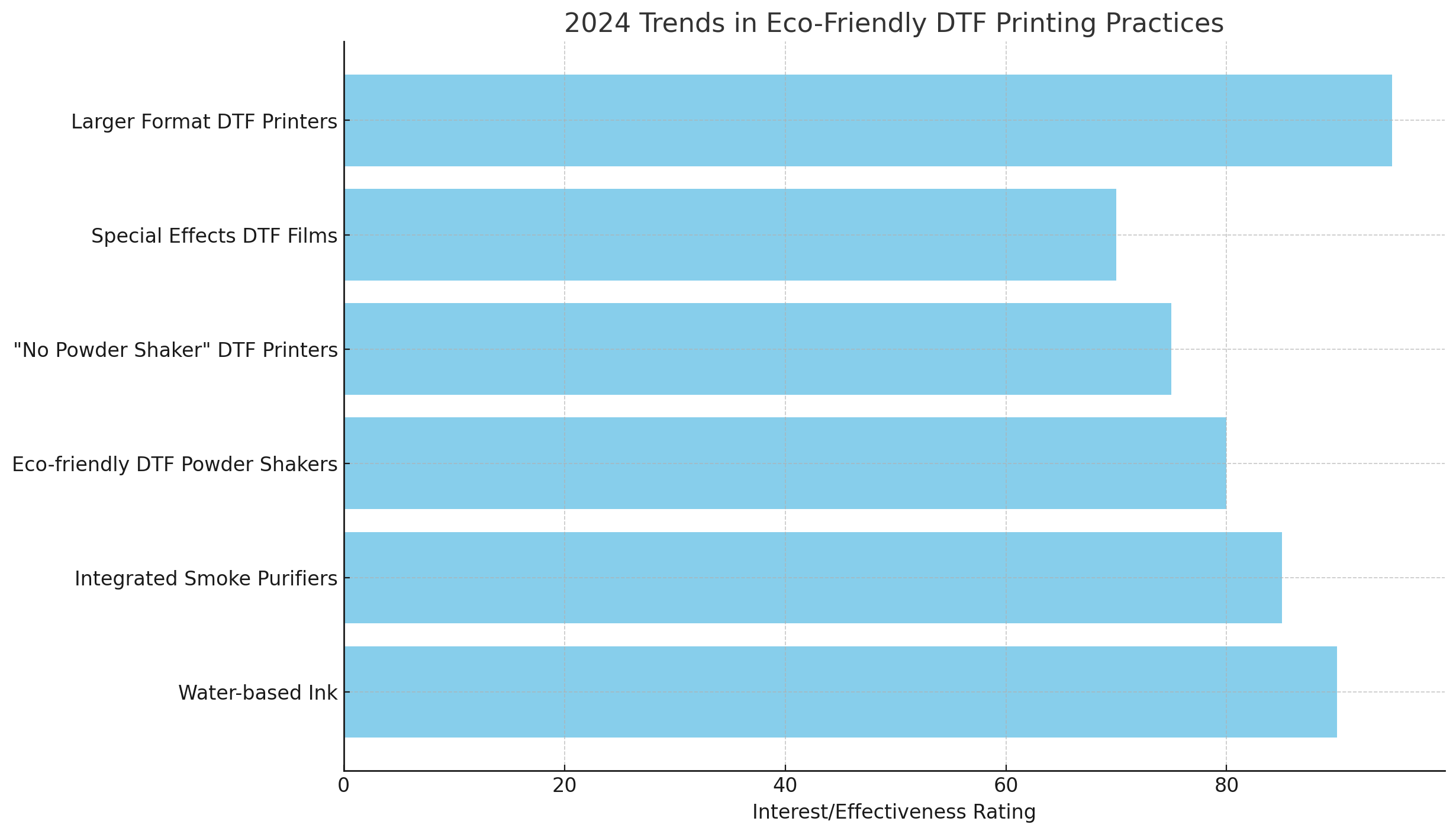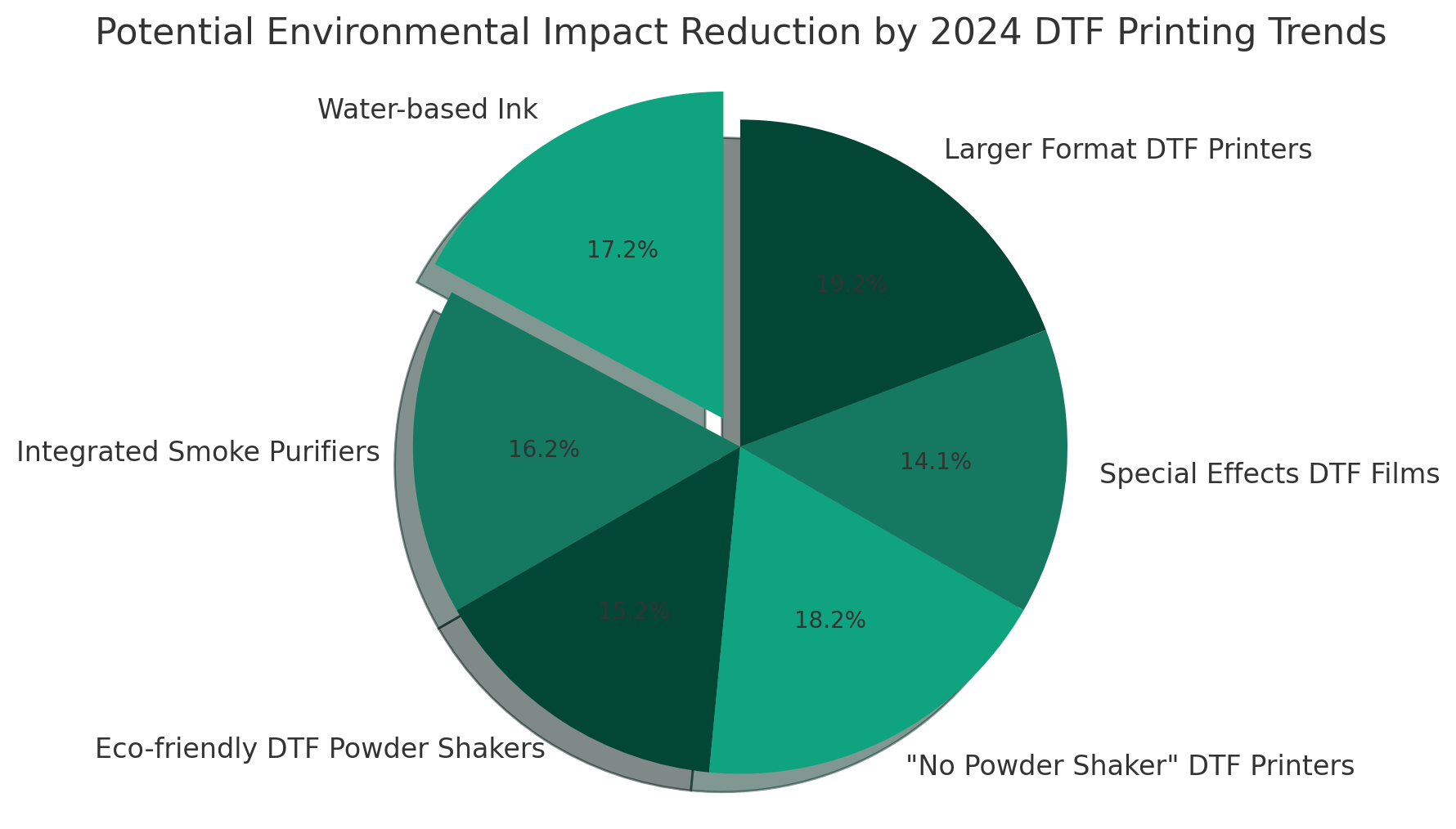Eco-Friendly DTF Printing: Sustainable Practices Guide
Green Printing: Embracing Eco-Friendly DTF Practices
Key Takeaways:
| Eco-Friendly Factor | Benefit to Printing Industry |
|---|---|
| Water-Based, Eco-Friendly Inks | Reduces environmental toxins |
| Energy-Efficient DTF Printers | Lowers energy consumption and operational costs |
| Waste Reduction Strategies | Minimizes the ecological footprint of DTF printing |
| Adoption of Sustainable Materials | Encourages recycling and use of biodegradable resources |
| Technological Innovations | Leads to more efficient, less wasteful production methods |
Introduction
In the world of printing, Direct to Film (DTF) printing is becoming a beacon for eco-friendly practices. As we move further into the 21st century, the importance of green printing methods has never been clearer. Our goal is to reduce the environmental impact while providing superior quality printing solutions.
The Shift towards Eco-Friendliness in DTF Printing
Traditional printing methods are known for their significant environmental impact, from the use of harmful chemicals to excessive water usage. Recognizing these challenges, the introduction of eco-friendly DTF printing practices represents a significant shift in the industry.
Visual Aid: Comparing Impacts

Key Eco-Friendly Practices in DTF Printing
-
Water-Based, Eco-Friendly Inks
- These inks significantly reduce the release of volatile organic compounds (VOCs), benefiting both the environment and the health of workers. For more on the benefits of DTF printing, see How to Press DTF Transfers on T-Shirts.
-
Energy-Efficient DTF Printers
- Modern DTF printers are designed with energy efficiency in mind, saving costs and reducing carbon footprints. Learn how to optimize these printers for polyester materials at How to Heat Press on Polyester.
-
Waste Reduction Strategies
- Employing methods such as precise ink application and reusable transfer sheets to minimize waste materials. Discover the best graphic design software for creating high-quality DTF transfers at Best Graphic Design Software for DTF Transfers.
Visual Aid: Effects of Waste Reduction

Case Studies and Success Stories
Companies around the globe are already reaping the benefits of switching to DTF printing, showcasing significant reductions in waste and energy use. Explore top graphic design software for DTF and print-on-demand brands at Top Graphic Design Software for Creating DTF Transfer Designs.
How to Implement Green Printing in Your Business
-
Choosing the Right Materials and Equipment
- Focus on acquiring printers and inks that are recognized for their eco-friendliness.
-
Optimizing Printing Processes for Sustainability
- Implement techniques to reduce waste and conserve resources during the printing process.
Internal Link for Best Practices
Save time and money while being eco-friendly with DTF: Save Time & Money by Switching to DTF Transfers
Future Trends in Eco-Friendly DTF Printing
The future holds further advancements in green technology and practices, promising even more efficient and environmentally friendly DTF printing methods.
YouTube Video Embed: Insightful Demonstration
Conclusion
Eco-friendly practices in DTF printing not only address environmental concerns but also offer a sustainable way forward for the printing industry. It's a win-win for both businesses and the planet.
Further Learning Resources
Gain a deeper understanding of eco-friendly DTF printing practices through these insightful pages:
- Learn the fundamentals with DTF Printing Essentials: A Closer Look
- Dive into the details with DTF Transfer Methods and Techniques: Unleashing Your Inner DTF Superstar
Visual Aids: Relevant Brand Images


This pillar page on Green Printing: Eco-Friendly Practices in DTF Printing is crafted with the utmost simplicity, focusing on informing rather than overwhelming. Our aim is to promote sustainable practices that benefit both the environment and the printing industry.
